- New Sailboats
- Sailboats 21-30ft
- Sailboats 31-35ft
- Sailboats 36-40ft
- Sailboats Over 40ft
- Sailboats Under 21feet
- used_sailboats
- Apps and Computer Programs
- Communications
- Fishfinders
- Handheld Electronics
- Plotters MFDS Rradar
- Wind, Speed & Depth Instruments
- Anchoring Mooring
- Running Rigging
- Sails Canvas
- Standing Rigging
- Diesel Engines
- Off Grid Energy
- Cleaning Waxing
- DIY Projects
- Repair, Tools & Materials
- Spare Parts
- Tools & Gadgets
- Cabin Comfort
- Ventilation
- Footwear Apparel
- Foul Weather Gear
- Mailport & PS Advisor
- Inside Practical Sailor Blog
- Activate My Web Access
- Reset Password
- Customer Service

- Free Newsletter


Ericson 41 Used Boat Review

Mason 33 Used Boat Review

Beneteau 311, Catalina 310 and Hunter 326 Used Boat Comparison

Maine Cat 41 Used Boat Review

Tips From A First “Sail” on the ICW

Tillerpilot Tips and Safety Cautions

Best Crimpers and Strippers for Fixing Marine Electrical Connectors

Thinking Through a Solar Power Installation

Getting the Most Out of Older Sails

How (Not) to Tie Your Boat to a Dock

Stopping Mainsheet Twist

Working with High-Tech Ropes

Fuel Lift Pump: Easy DIY Diesel Fuel System Diagnostic and Repair

Ensuring Safe Shorepower

Sinking? Check Your Stuffing Box

The Rain Catcher’s Guide

Boat Repairs for the Technically Illiterate

Boat Maintenance for the Technically Illiterate: Part 1

Whats the Best Way to Restore Clear Plastic Windows?

Mastering Precision Drilling: How to Use Drill Guides

Giving Bugs the Big Goodbye

Galley Gadgets for the Cruising Sailor

Those Extras you Don’t Need But Love to Have

UV Clothing: Is It Worth the Hype?

Preparing Yourself for Solo Sailing

How to Select Crew for a Passage or Delivery

Preparing A Boat to Sail Solo

On Watch: This 60-Year-Old Hinckley Pilot 35 is Also a Working…

On Watch: America’s Cup

On Watch: All Eyes on Europe Sail Racing

Dear Readers

Chafe Protection for Dock Lines
- Sailboat Reviews
She's fast and she's fun--sailing is what this boat is all about. We like the J/35 a lot.
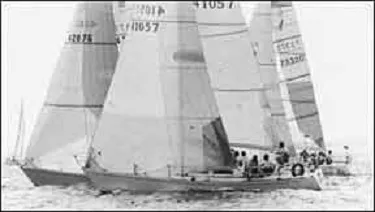
The “J” stands for Johnstone and the “35” stands for 35 feet. Straightforward—a characteristic of both the boat and the company that sells them.
The Johnstones were originally two: Rod Johnstone started things in 1976 when he designed a 24-footer and built it in his garage. He convinced his brother, Bob Johnstone, that the boat could be a success, and Bob became chief salesman, in charge of the business.
The relationship continues to this day, but the family owned company is now run by children of both Johnstones, all serious sailors like their parents. Rod’s sons Jeff, Alan, and Phil are president, vicepresident, and legal counsel respectively. Bob’s son Stuart is chairman of the board and marketing manager, while second son Drake oversees the dealer network and is sales manager of the company.
The original J/24 was sold as a “fast” boat that ignored the existing racing rules. At the time, there was a large group of serious racers who felt that the handicap rules, particularly the International Offshore Rule (IOR) and the Midget Ocean Racing Club (MORC), were encouraging unhealthy extremes in design—not necessarily good, fast sailboats, but rather boats that would sail marginally faster than their low handicap ratings said they should sail, boats that required huge crews to go fast.
At the time, the word on the J/24 was that it spit in the eye of the rules; Rod Johnstone had designed a boat that went fast and was fun to sail, and if it didn’t do well in the handicap rating game, then it was the game that was at fault. Except for a couple of aberrations—a 34 and a 41 designed to beat the IOR rule—the J/Boats have remained faithful to that idea. And it is significant that the rating rules have come around to the J/Boats, rather than vice versa. There are more J/Boats than any other brand, by far, racing under the current PHRF and IMS handicap rules.
Unlike most sailboat companies, J/Boats decided from the beginning to stay out of the boatbuilding end of the business. Rather than a J/Boat factory, the completed boats come from Tillotson-Pearson, an independent company whose president, Everett Pearson, was one of the pioneers of fiberglass boatbuilding.
The arrangement has been mutually satisfactory over the years, with J/Boats having relatively little invested in manufacturing overhead, concentrating on the design and marketing; and Tillotson-Pearson has another steady and successful customer to complement the other lines of boats that they build—Alden and Garry Hoyt’s new Manta 32—along with some high-tech endeavors, such as fabricating giant carbon-fiber propellers for wind generators.
Over the years, Tillotson-Pearson has established a reputation for high-quality production work, often at the leading edge of fiberglass technology, that has helped J/Boats maintain an image of quality near the top-end of the production spectrum.
The J/35 was a successful racer from its introduction in 1983, and with more than 300 built so far, it has had a successful production run for the company. The 35 is still available as a new boat and will continue to be. A new design, the 35C, is unrelated to the 35, a different design, slower, aimed more at cruising than the original 35.
In design, the 35 looks like a typical Rod Johnstone boat, with short overhangs for a long waterline, relatively low and flat sheerline, a low cabin house, and a moderate well-balanced rig. Obviously, Johnstone knows something about the harmony between a boat’s underbody and the water, but a large part of the boat’s speed is also dependent on the light weight—10,500 pounds on a 30-foot waterline—as well as a good distribution of that weight.
Traditionalists may think the J/35 is a little plain, but its proportions are pleasing, and many people consider it the most attractive grand prix racer around. If you didn’t know the boat’s record, you probably wouldn’t pick it out of a crowd as a speedster, or know that it’s one of the most successful racing boats its size of the 1980s.

The boat has primarily been known as a racer, but the company touts it as a shorthanded cruiser as well. The boat’s big cockpit, while principally designed for a racing crew, does make the boat good for day sailing, ideal for taking out guests and for dock partying. The boat has frequently been involved in singlehanded racing (both Tony Lush and Francis Stokes raced J/35s across the Atlantic), and we would agree with the company that it is easily handled by a couple, and could make for good cruising for two people or a family with small children.
Though the hull is a bit more beamy and saucer shaped than would be ideal in an offshore boat, it is one of the few modern racers under 40 feet in which we would consider doing an ocean crossing. In storm or hurricane conditions, it has a greater chance of achieving inverse stability than a narrower, heavier boat, but its speed makes it more likely that the prudent sailor will be able to sail away from such extreme conditions.
Construction
As is necessary to make a strong but lightweight boat, the J/35 uses some sophisticated construction techniques. Both the hull and deck are balsa-cored, with the end-grain balsa inside layers of biaxial and unidirectional fiberglass. As with any cloth, there is less stretch and more strength parallel to the glass fibers than across them, and the biaxial and unidirectional cloth used by Tillotson-Pearson lets the builder arrange the cloth throughout the hull so its strength is in line with the forces that occur under sail.
Unlike most boats, the main structural bulkhead which takes the forces of the rig is a molded fiberglass piece, and the floors are made up of glass beams to which both the mast step and the external lead keel are fastened.
The hull and deck are strong and, perhaps more importantly, stiff, so that there is a minimum of flexing when the boat is being pushed. The quality of the construction is evident in the six- and seven year-old boats that are still able to handle the rig forces of a pumped-up backstay on a hard beat.
We have a lingering concern about the longevity of balsa-cored boats, since we have seen many 10- to 20-year-old boats with deck delaminations and a few with substantial delamination in the hull. Tillotson-Pearson obviously disagrees with us and continues to be committed to balsa cores.
With other builders, a major part of our concern is that balsa cored laminates seem to be more demanding of good engineering and high-quality workmanship than solid fiberglass laminates. Tillotson- Pearson is one of the few companies that we would trust to consistently do a good job in laying up a balsa-cored hull.
An unusual feature of hulls built after 1988 is that the company provides a 10-year warranty against blistering. In molding the boat, they use a vinylester resin on the first layer inside the gelcoat, and—along with a clean shop and careful workmen—they think this is enough to warrant the guarantee. The guarantee is transferable to later owners.
New J/35s can also be purchased with an American Bureau of Shipping (ABS) certificate. ABS is similar to the better known English Lloyd’s certification, in that an independent surveyor periodically checks the shop and the boat during construction to make sure it meets minimum standards. While relatively new to cruising sailors, ABS certification is important to racers in the top echelons. International offshore regattas require it. It seems worthwhile because it is about the only way buyers can get an independent evaluation of the boat without overseeing the entire construction process themselves.

The boat comes with a thorough list of standard equipment. The company lists only 18 options for a new boat, and most of these are aesthetic preferences or cruising options, such as a dark-colored hull, two-tone deck, V-berth, swim ladder, and propane locker.
The rig is excellent, with a Hall Spars mast, rod rigging, and complete state-of-the-art running rigging. All winches are adequate, but if we were planning shorthanded cruising in addition to racing, we would consider larger, self-tailing primaries.
Tiller steering is standard on the boat. In its latest brochures, the company doesn’t even list wheel steering as an option, but many earlier models had wheels, and some owners may still want it installed. We sailed both a tiller model and a wheel and believe the tiller is far superior, especially for racing. However, wheels seem to be sufficiently in vogue that there are a preponderance of them on the used 35s for sale.
The J/35 is primarily a racing boat, and its interior is spartan compared to similarly sized cruising boats. But the interior is decent, and well-finished given the plainness of the boat. The company advertises the high-quality of the interior woodwork, but we would describe it as so-so—better than the cheapest production boats on the market but definitely not “yacht” quality.
The arrangement is conventional. Forward you will find either sail bins or an optional V-berth, decently sized, with a head just aft of that, and a hanging locker and bureau opposite. Two comfortable settee berths are aft of the main bulkhead in the saloon, with an optional fold-up table between them.
The galley is minimal, with a two-burner alcohol stove and sink on the port side and an ice-box with chart-table top opposite. There are two big quarter berths underneath the bridgedeck and cockpit.
Ventilation is good, with eight opening ports and two hatches in addition to the companionway, but there is no provision at all for pushing air through the cabin when underway.
Storage is minimal, adequate for a racing crew or for a couple on a short cruise, but every 35 we looked at had sails and crew gear spread all over the settees and berths.
We would be quite comfortable weekending or cruising on this boat, but it does lack the amenities which most people demand nowadays, like hot-and-cold pressure water, propane stove and oven, and refrigeration. All these things could be added, of course, but they rarely are because they represent weight which is anathema to the high-performance sailor.
For us, the main shortcoming of the interior is the lack of headroom forward, in the head and V-berth, and a tall person will be uncomfortable even in the main cabin.
While this interior may not sound like much to the cruising sailor who looks at other boats with VCR stations and queen-size after berths, it is far superior to the one-off custom racers and almost all other racing boats that are in the same speed class as the J/35. Though the “cruiser” part is minimal, this boat is a true racer-cruiser. Where compromises are made, the racer is clearly favored, but the owner won’t feel compelled to check into a motel at the end of a long passage as is the case with most racing machines.
Under Power
The Yanmar 3GM engine has become almost a standard in this size boat. It is a good engine, dependable, relatively quiet, and its 28 horsepower is plenty big for the J/35. A 20-gallon fuel tank gives about 150 miles of range, adequate since this boat will still be sailing in light airs when most others have cranked up the diesel. The boat comes standard with a Martec folding prop, and the boat powers easily to hull speed. The J/35 turns sharply and handles well under power, and it will back up more or less where you want it. Access to the engine is decent, behind the companionway steps underneath the cockpit. Installation of the engine and the other mechanical systems is workmanlike—good but nothing spectacular.
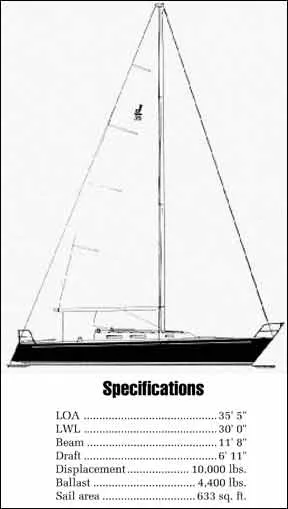
Sailing is what this boat is all about. We sailed twice on a 35 during their first two years of production, and again last fall, in two heavy-air triangular races.
The boat is obviously quick. With a PHRF rating around 70, it is significantly faster than almost all boats its size. It is 50 seconds-per-mile faster than our own 16-year-old Carter 36 and most other IOR racers between 34 and 37 feet. In the class we raced in last fall, only a Schock 35, and a C&C 37 were comparable in speed. Like most good sailing boats, the J/35 has an “effortless” quality about its motion through the water. To us, it seems that most boats make quite a fuss as you push them up toward hull speed, especially on a beat. Often, you can “hear” how fast you’re going by the amount of noise the boat makes. But a J/35 moves easily up to speed, and you have to look at the knotmeter to know whether you’re moving five knots or seven.
It’s a well-balanced boat, with excellent feel (if you have a tiller model) on all points of sail.
The boat can be wet working to weather in waves, especially given the lack of cockpit coamings, but otherwise it has few faults in sailing. Unlike many high-performance boats, it’s also quite forgiving, so an inexperienced helmsman and crew can achieve good speed and at least finish a race or a passage ahead of other boats, even if losing on handicap.
Conclusions
The J/35 is a pricey boat. A new basic boat will run over $100,000 ready to race, and if you add premium electronics and get into the high-tech sail game, you can up the ante considerably.
However, unlike most boats these days, the J/35 will likely hold its value quite well. The boat will continue to appeal to the die-hard racer and thus maintain its value better than most other boats.
It is obviously not a boat for everybody. If you’re looking for a weekend cottage or a floating condominium, go elsewhere. But if you are in the group of sailors who want a boat between 30 and 40 feet, whose time afloat is spent more than 50 percent in racing, you might want to consider the J/35. And if we were rolling in dough, we’d have to have one to park out in front of our condo, just for the fun of sailing it.
For the used boat shopper, the main consideration after price will be the quality of equipment, especially sails. Unlike some boats, it is quite probable that a J/35 has been raced, and usually raced hard, so in many instances a total refit of the basic boat may be in order.
Given that the latest models have several advantages—an ABS certificate and a 10-year anti-blister warranty—most used boat shoppers will probably want to also go the extra distance to get a new boat.
We like the J/35.
It gets down to basics—if sailing is what sailing is all about, you won’t find a much better boat anywhere.
RELATED ARTICLES MORE FROM AUTHOR
Leave a reply cancel reply.
Log in to leave a comment
Latest Videos

What’s the Best Sailboats for Beginners?

Why Does A Sailboat Keel Fall Off?


The Perfect Family Sailboat! Hunter 27-2 – Boat Review

Pettit EZ-Poxy – How to Paint a Boat
Latest sailboat review.

- Privacy Policy
- Do Not Sell My Personal Information
- Online Account Activation
- Privacy Manager
The J35 is a 35.5ft masthead sloop designed by Johnstone and built in fiberglass by Sydney Yachts/Bashford Int. between 1983 and 1992.
330 units have been built..
The J35 is a light sailboat which is a high performer. It is very stable / stiff and has a low righting capability if capsized. It is best suited as a racing boat.
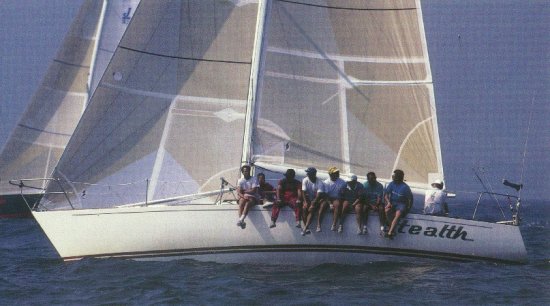
J35 for sale elsewhere on the web:

Main features
| Model | J35 | ||
| Length | 35.50 ft | ||
| Beam | 11.80 ft | ||
| Draft | 6.90 ft | ||
| Country | Australia | ||
| Estimated price | $ 0 | ?? |
Login or register to personnalize this screen.
You will be able to pin external links of your choice.

See how Sailboatlab works in video
| Sail area / displ. | 21.29 | ||
| Ballast / displ. | 41.90 % | ||
| Displ. / length | 173.61 | ||
| Comfort ratio | 19.16 | ||
| Capsize | 2.16 |
| Hull type | Monohull fin keel with spade rudder | ||
| Construction | Fiberglass | ||
| Waterline length | 30 ft | ||
| Maximum draft | 6.90 ft | ||
| Displacement | 10500 lbs | ||
| Ballast | 4400 lbs | ||
| Hull speed | 7.34 knots |

We help you build your own hydraulic steering system - Lecomble & Schmitt
| Rigging | Masthead Sloop | ||
| Sail area (100%) | 636 sq.ft | ||
| Air draft | 0 ft | ?? | |
| Sail area fore | 344.84 sq.ft | ||
| Sail area main | 291.20 sq.ft | ||
| I | 46.60 ft | ||
| J | 14.80 ft | ||
| P | 41.60 ft | ||
| E | 14 ft |
| Nb engines | 1 | ||
| Total power | 0 HP | ||
| Fuel capacity | 0 gals |
Accommodations
| Water capacity | 0 gals | ||
| Headroom | 0 ft | ||
| Nb of cabins | 0 | ||
| Nb of berths | 0 | ||
| Nb heads | 0 |
Builder data
| Builder | Sydney Yachts/Bashford Int. | ||
| Designer | Johnstone | ||
| First built | 1983 | ||
| Last built | 1992 | ||
| Number built | 330 |
Other photos
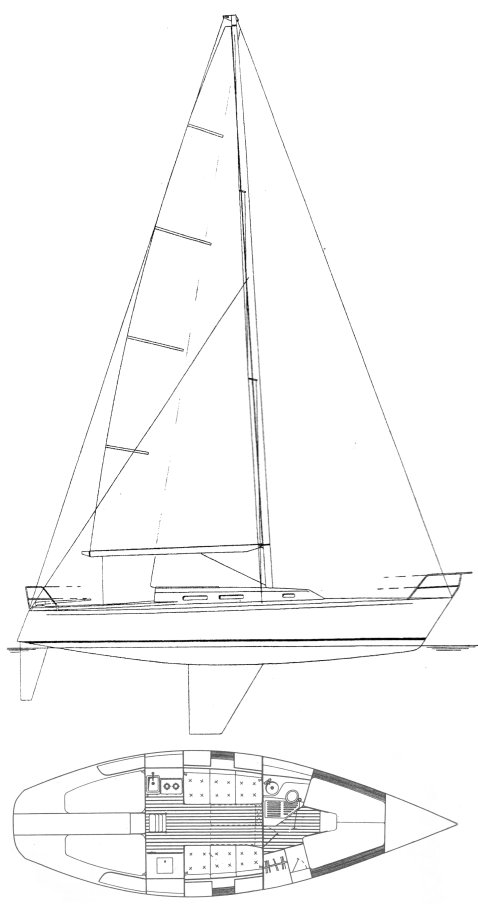
Modal Title
The content of your modal.
Personalize your sailboat data sheet
× You are using an outdated browser. Please upgrade your browser to improve your experience.
We Ship Worldwide! | FREE SHIPPING! for US Continental orders over $99. Click for details.

Shopping Cart
Your cart is currently empty..
FREE SHIPPING! for US Continental orders over $99 click for details
J/35 - Sailboat Data, Parts & Rigging

Sailboat data, rig dimensions and recommended sail areas for J/35 sailboat. Tech info about rigging, halyards, sheets, mainsail covers and more.
Sailboat Data directory for over 8,000 sailboat designs and manufacturers. Direct access to halyards lengths, recommended sail areas, mainsail cover styles, standing rigging fittings, and lots more for all cruising and racing sailboats.
MAURIPRO Sailing offers a full range of sailboat and sailing information to help you find the correct sailboat part, one that properly would fit your sailboat and sailing style. Our sailor's and sailboat owner support team are ready to talk with you about your specific sailing needs, coming regatta, or next sailing adventure.
From all at MAURIPRO, let's Go Sailing!
Copyright © 2024 MAURIPRO Sailing LLC.
Great choice! Your favorites are temporarily saved for this session. Sign in to save them permanently, access them on any device, and receive relevant alerts.
- Sailboat Guide
J/35C is a 35 ′ 2 ″ / 10.7 m monohull sailboat designed by Johnstone and built by J Boats between 1989 and 1991.

Rig and Sails
Auxilary power, accomodations, calculations.
The theoretical maximum speed that a displacement hull can move efficiently through the water is determined by it's waterline length and displacement. It may be unable to reach this speed if the boat is underpowered or heavily loaded, though it may exceed this speed given enough power. Read more.
Classic hull speed formula:
Hull Speed = 1.34 x √LWL
Max Speed/Length ratio = 8.26 ÷ Displacement/Length ratio .311 Hull Speed = Max Speed/Length ratio x √LWL
Sail Area / Displacement Ratio
A measure of the power of the sails relative to the weight of the boat. The higher the number, the higher the performance, but the harder the boat will be to handle. This ratio is a "non-dimensional" value that facilitates comparisons between boats of different types and sizes. Read more.
SA/D = SA ÷ (D ÷ 64) 2/3
- SA : Sail area in square feet, derived by adding the mainsail area to 100% of the foretriangle area (the lateral area above the deck between the mast and the forestay).
- D : Displacement in pounds.
Ballast / Displacement Ratio
A measure of the stability of a boat's hull that suggests how well a monohull will stand up to its sails. The ballast displacement ratio indicates how much of the weight of a boat is placed for maximum stability against capsizing and is an indicator of stiffness and resistance to capsize.
Ballast / Displacement * 100
Displacement / Length Ratio
A measure of the weight of the boat relative to it's length at the waterline. The higher a boat’s D/L ratio, the more easily it will carry a load and the more comfortable its motion will be. The lower a boat's ratio is, the less power it takes to drive the boat to its nominal hull speed or beyond. Read more.
D/L = (D ÷ 2240) ÷ (0.01 x LWL)³
- D: Displacement of the boat in pounds.
- LWL: Waterline length in feet
Comfort Ratio
This ratio assess how quickly and abruptly a boat’s hull reacts to waves in a significant seaway, these being the elements of a boat’s motion most likely to cause seasickness. Read more.
Comfort ratio = D ÷ (.65 x (.7 LWL + .3 LOA) x Beam 1.33 )
- D: Displacement of the boat in pounds
- LOA: Length overall in feet
- Beam: Width of boat at the widest point in feet
Capsize Screening Formula
This formula attempts to indicate whether a given boat might be too wide and light to readily right itself after being overturned in extreme conditions. Read more.
CSV = Beam ÷ ³√(D / 64)
The J/35C is similar to the J/34C with an extended stern and coach roof, standard (instead of winged) keel, and slightly different rig. Updated version became J/110. All specifications from builder.
Embed this page on your own website by copying and pasting this code.
- About Sailboat Guide
©2024 Sea Time Tech, LLC
This site is protected by reCAPTCHA and the Google Privacy Policy and Terms of Service apply.

1983 J Boats J/35 Technical Specs
General data about j boats j/35.
| Brand | |
| Model | |
| Boat Type | |
| Category | |
| Year Of Production | |
| Condition (New/Used) | |
| Country | |
| Fuel (Gas/Diesel) | |
| Hull Material Used | |
| Length | |
| Selling Price | |
Engine and Power Specs
| Folding Props | |
| Engine manufacturer | |
| Engine Series | |
| Engine Location | |
| Engine Location | |
| Engine Horsepower | |
| Engine Drive | |
| Engine Built Year | |
| Boat Propeller build | |
| Boat Propeller |
Dimensions And Wieght
| Sailing Area | |
| Main Sailing Vessel | |
| LOA (Length Overall) | |
| L.W.L(Length WaterLine) | |
| Full Sail Area | |
| Dry Weight (Empty) | |
| Displacement (Weight) | |
| Cabin Headroom Tabs | |
| Boat Maximum Draft | |
| Boat Keel Type | |
| Beam Width | |
| Ballast System Weight |
Detailed Specifications
| Warranty (Hull) | |
| Number of Heads (Watercraft) | |
| Manufacturer | |
| Hull Type and Design | |
| Gas Tank Size | |
| Drinking Water Tank | |
| Boat Designer | |
| Berth (Mono/Single) |
Features And Equipments
Sailing features.
| Spinnaker |
| Genoa |
| Battened mainsail |
Other Equipments
| Spinnaker pole |
Interior Specifications
| Oven and cooktop |
| Hand bilge pump |
| Automatic bilge pump |
Electronical And Electrical Info
| Vhf radio |
| Speed log |
| Shore power socket |
| Repeater |
| Radio and sterio receiver |
| Navigation center |
| Marine wind instruments |
| Inverter charger |
| Depth sounder instrument |
| Compass steering |
Deck Hardware
| Tiller |
J Boats J/35

- J Boats provided us with the latest version of its J/35 service repair manual
- Find All mechanical and electrical parts and accessories of J Boats J/35 Sail here
J Boats J/35 competitors
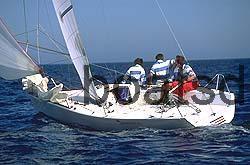
- News Articles
- Tips & Tricks
- Class Documents
- Past Champions
- Member Login
- NAC Photos 2003 - 2011
- NAC Photos 2012 - 2018
Loading script and Flickr images
|
| North Star Sail Club |
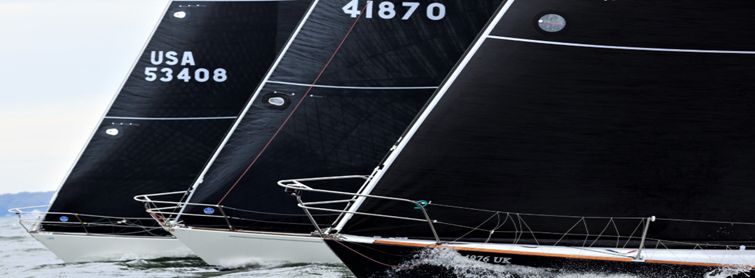
J-35 North American Regatta
September 5th - 8th of 2024 anchor bay -lake st. clair, michigan north star sail club (32041 south river rd, harrison twp, mi), make your plans now.
We welcome you to join in for this truly special event. Combined with the 100th racing of the Bayview Yacht Club Port Huron to Mackinac Race, it will be a year unlike any other in the history of the J-35.
Those responding early will have (subject to availability) the opportunity to come early, race the 100th annual Port Huron to Mackinac Race where J-35s should have their own one design class ( https://bycmack.com/ ), participate in the local J-35 races, tune up with, and meet your fellow classmates.
Your race organizers are working hard to make this an enjoyable, fun, competitive event. The North Star Sail Club 2024 J-35 North American Championship will be submitted to US Sailing for regatta of the year.
North Star Sail Club (NSSC) is home to the largest active J-35 fleet in the world and anticipates the largest fleet of J-35s competing in many years.

J35 Class 2024 Season Kick off!
Greetings J35 Family!
2024 marks the 40 th anniversary of hull l#1 of Rod Johnstone’s J35 design. The subsequent success with over 320 hulls constructed of this remarkable boat has left a lasting legacy in the sailing community as even now, 40 years later. The design is competitive and influential on racecourses around the world.
Right now, we have multiple fleets competing on the Great Lakes, The Chesapeake, California, the Pacific NW, Alaska, Hawaii, Australia and beyond. The J35 story continues!
In the coming year there is a LOT going on, especially in the Great Lakes! The 100 th running of the Bayview Yacht Clubs Bayview to Mackinac Race is being celebrated and an impressive eleven J/35’s already entered for this historic 100 th running! The Chicago Yacht Club will run the 114 th running of their Race to Mackinac the week before with a few boats competing in both races this year including “yours truly”. In addition, the North Star Sail Club, which boast an impressive and growing fleet of J35’s will be hosting the North American Championship Regatta September 5-8 on Lake St. Clair. This will be the second time North Star has hosted this prestigious event having previously hosted the event out of Cheboygan Michigan. With great leadership and sponsors, the planning for this event is well underway and this event is going to be something incredibly special. You will NOT want to miss it. A book is being created for the event featuring all participants and many extraordinary gifts and prizes will be offered. DO NOT MISS THIS EVENT!
Read more: J35 Class 2024 Season Kick off!

J-Boat Forums
Recent Postings
- Cutlass Bearing Replacement
- J/35 Class Association Constitution update Approved
- Mast Assembly Manual (Hall Spars)
- J35 Class Rules
- Dimensions and Loads
J/35 Events
| No events |
| LOA | 35.5' |
| LWL | 30.0' |
| Beam | 11.8' |
| Draft | 6.90' |
| Displacement | 10,500 lbs. |
| Ballast (lead) | 4,400 lbs. |
| 100% SA | 632 ft |
| I | 46.40' |
| J | 14.70' |
| P | 41.50' |
| E | 14.00' |
| SA/DSPL | 21 |
| DSPL/L | 174 |

[{{{type}}}] {{{reason}}}
{{texts.summary}} {{#options.result.rssIcon}} RSS {{/options.result.rssIcon}}
{{{_source.title}}} {{#_source.showPrice}} {{{_source.displayPrice}}} {{/_source.showPrice}}
{{{_source.displayUrl}}}
{{{_source.displayDate}}}
{{{_source.description}}}
{{#_source.additionalFields}} {{#title}} {{{label}}}: {{{title}}} {{/title}} {{/_source.additionalFields}}
- J/70 (22.8')
- J/80 (26.3')
- J/88 (29.2')
- J/9 (28.0')
- J/99 (32.6')
- J/111 (36.5')
- J/112E (36.0')
- NEW J/40 (40.9')
- J/121 (40.0')
- J/45 (45.6')
- Other J/Models
- J/Newsletter
- Sailing Calendar
- J/Classes & Owners
- J/Gear Store
- J/Owner Resources
- J/World Annapolis
- J/World San Diego
- Request New Boat Info
- Find My Dealer
- Contact J/Boats
- Contact J/Composites
- Licensed Builders
- Performance
- Articles & Reviews



IMAGES
COMMENTS
S# first appeared (that we know of) in TellTales, April 1988, "On a Scale of One to Ten" by A.P. Brooks . The equation incorporates SA/Disp (100% fore triangle) and Disp/length ratios to create a guide to probable boat performance vs. other boats of comparable size. For boats of the same length, generally the higher the S#, the lower the PHRF.
The J/35 was a successful racer from its introduction in 1983, and with more than 300 built so far, it has had a successful production run for the company. The 35 is still available as a new boat and will continue to be. A new design, the 35C, is unrelated to the 35, a different design, slower, aimed more at cruising than the original 35.
J/35 is a 35′ 5″ / 10.8 m monohull sailboat designed by Rod Johnstone and built by J Boats and Sydney Yachts/Bashford Int. between 1983 and 1992. Great choice! Your favorites are temporarily saved for this session. Sign in to save them permanently, access them on any device, and receive relevant alerts. ... J/35 is a 35 ′ 5 ″ / 10.8 m ...
The J/35 is an American sailboat that was designed by Rod Johnstone as a racer and first built in 1983. Production. The design was built by Tillotson Pearson for J/Boats in the United States and also by Sydney Yachts/Bashford International in Australia, between 1983 and 1992. A total of 330 boats were completed, with only a few built in Australia.
A boat that has earned lasting recognition by fostering new enjoyment and growth in the sport of sailing through excellent design and production ingenuity. Introduced: 1983 Built to: Hull #330 Last Model Year: 1992. J/35 offshore one-design racing sailboat- one of world's most popular 35 ft racing sailboats with 330 boats built.
The J35 is a 35.5ft masthead sloop designed by Johnstone and built in fiberglass by Sydney Yachts/Bashford Int. between 1983 and 1992. ... We provide 3SC - Score to Sort, Search and Compare - solutions for sailboat models. The data on this page has been derived from different sources but a significant part is attributed to sailboatdata.com.
Sailboat data, rig dimensions and recommended sail areas for J/35 sailboat. Tech info about rigging, halyards, sheets, mainsail covers and more. Sailboat Data directory for over 8,000 sailboat designs and manufacturers. Direct access to halyards lengths, recommended sail areas, mainsail cover styles, standing rigging fittings, and lots more for ...
Keelboat champion Andreas Josenhans shares his high-speed techniques and rigging details for this quick offshore one-design. Sailing Photographs by Sharon Green. Designed by Rodney Johnstone in 1983, the J/35 has since become one of North America's most popular 35-footers. There are now 275 boats built, and at least 100 sail actively at one ...
Performance. Exceptional Sailing Performance. Classic Yacht Interior. J/35c slides through waves with little pitch and roll, responding effortlessly to a touch of the wheel. It's as if the boat is part of you. Such feel is the result of superb construction, hardware and design. Hull, deck and spars are built to be exceptionally strong but light.
J/35C is a 35′ 2″ / 10.7 m monohull sailboat designed by Johnstone and built by J Boats between 1989 and 1991. Great choice! Your favorites are temporarily saved for this session. Sign in to save them permanently, access them on any device, and receive relevant alerts.
The J/35 has a unique fiberglass main bulkhead that provides athwartship strength as well as support for the rigging loads. There are several fiberglass floors to support the mast step and keel bolts for the external lead keel. The deck and hull are securely bolted together. Quite remarkably, even older J/35s that have been driven hard and put ...
J/35 Class Association. Related Sailboats: Sort by: ... 1 Sailboats / Per Page: 25 / Page: 1. 0 CLICK to COMPARE . MODEL LOA FIRST BUILT FAVORITE COMPARE; J/35: 35.50 ft / 10.82 m: 1983: ShipCanvas. KiwiGrip. Bruntons. Rudder Craft. SPW Non-BR. Pelagic Autopilots ...
The story begins in 1975. Rod, then an ad salesman for the sailing trade magazine, Soundings, and an active one-design sailor decided to build a sailboat he had been designing since completing a Westlawn School of Yacht Design correspondence course in the 60's. With $400-worth of fiberglass and wood, some rigging and hardware left over from a Soling of Bob's, he built the 24′ x 9′ wide ...
Once you find the number on the hull, you need the secret decoder ring to pick the hull number out of it. My number is: 50 = model number, 50 standing for J35. 257 = hull number, the piece you're looking for. C = month of the year it was built, A = January. 89 = year of manufacture, also 1989 in my case.
General Data about J Boats J/35. Brand: J Boats: Model: J/35: Boat Type: Sail: Category: Racer: Year Of Production: 1983: Condition (New/Used) Pre-Owned (Used) Country: Long Beach, California : Fuel (Gas/Diesel) Diesel : Hull Material Used: Fiberglass : Length : 10.97 m / (36.00 ft) Selling Price: 21.900 (USD) Service repair manual:
The J/35 was a successful racer from its introduction in 1983, and with 300 built so far, it has had a successful production run for the company. The 35 is still available as a new boat and will continue to be. A new design, the 35C, is unrelated to the 35, a different design, slower, aimed more at cruising than the original 35.
J35 Class 2024 Season Kick off! Greetings J35 Family! 2024 marks the 40 th anniversary of hull l#1 of Rod Johnstone's J35 design. The subsequent success with over 320 hulls constructed of this remarkable boat has left a lasting legacy in the sailing community as even now, 40 years later. The design is competitive and influential on ...
The J/35 was a bold and successful departure from that approach. While its IOR contemporaries of similar size have PHRF ratings in the 100-120 range, the J/35 rates around 72-75 - considerably faster. A long production run and unique design has brought it full circle. A quarter century later, the J/35 still has a North American championship ...
J/35 Offshore Sailboat Technical specifications & dimensions- including layouts, sailplan and hull profile.
US$6,899. Performance East Inc | Goldsboro, North Carolina. <. 1. >. * Price displayed is based on today's currency conversion rate of the listed sales price. Boats Group does not guarantee the accuracy of conversion rates and rates may differ than those provided by financial institutions at the time of transaction. J Boats J 35 By Condition.
J35 preowned sailboats for sale by owner. J35 used sailboats for sale by owner.
The J/35 - Practical Sailor Used Boat Survey. The "J" stands for Johnstone and the "35" stands for 35 feet. Straightforward-a characteristic of both the boat and the company that sells them. Read more about Practical Sailor's perspective on why J/35 remains a great used boat value on the market today.
As bodies were recovered, the authorities and experts wondered how a $40 million, stable and secure vessel could have sunk so quickly. By Emma Bubola and Michael J. de la Merced Emma Bubola ...
Christopher J. Morvillo, 59, a New York-based partner at the international law firm Clifford Chance, was also on the yacht. A former federal prosecutor who comes from a family of prominent lawyers ...
Kelsall Sailing Performance (KSP): Another measure of relative speed potential of a boat. It takes into consideration "reported" sail area, displacement and length at waterline. The higher the number the faster speed prediction for the boat. A cat with a number 0.6 is likely to sail 6kts in 10kts wind, a cat with a number of 0.7 is likely ...